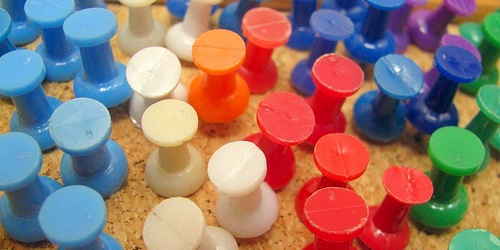You may have heard news lately regarding chip and PIN technology. Come October 2015, credit card issuers in the United States will migrate to smart chip technology in an effort to combat fraud that is so prevalent with magnetic stripe cards.
In the rest of the world, these smart chip credit cards are already widely used, but stateside we’re still relying on that fateful magnetic stripe, which could explain all that fraud recently.
Where Does the PIN Come In?
Well, believe it or not, all credit cards have PINs, though they’re rarely noticed or used, unless you live on cash advances.
When you first receive a credit card, you are typically issued a Personal Identification Number (PIN) that can be used if and when you need to pull out cash against your credit line.
It works just like a standard debit card, except instead of pulling money from your checking or savings account, you pull out money against your credit card’s credit line.
There’s a pretty glaring difference here…cash you actually have vs. credit you are borrowing.
Additionally, the cost of these transactions is typically sky-high, and not worth it unless you’ve exhausted every single other option and really, really need the money.
For example, a credit card issuer may charge you a 5% fee just to complete the transaction, along with an outrageous APR of 24.99% from the moment the cash is in your hand (or bank account).
Additionally, the amount you can pull is only a fraction of your total credit limit, not the entire thing.
Note that cash advances differ from those convenience checks your receive in the mail, which typically offer much more favorable terms like 0% APR and smaller fees.
If you don’t have or recall your PIN, some issuers will allow you to create or retrieve one online.
*Never share your PIN with anyone or write it down anywhere anyone can find it, such as on the back of your card! Huge mistake!
So We’ll Have to Punch in a PIN Next Year When Using a Credit Card?
No, probably not. Though chip and pin technology is popular in the rest of the world, credit card issuers in the U.S. are only migrating to smart chip credit cards. One of the first available is the Amex Everyday Card.
There won’t be a requirement to punch in a PIN as well when making a transaction, at least initially.
This could be because we’re all accustomed to just swiping our credit cards and signing a receipt.
If that’s the case, it’ll be referred to as “chip and signature,” meaning there’s still a chip that replaces the magnetic stripe, but you still sign like you always did.
The chip itself is supposed to make credit card transactions a lot safer, so the PIN isn’t really necessary. Whether that will change remains to be seen.
Anyway, all credit cards have PINs, but most are never actually used. It’s actually a good thing if you don’t use your PIN, given the immense cost involved.
So if you don’t know your credit card PIN, you’re probably doing it right…
- Make Sure You Have a Premium Chase Credit Card so You Can Transfer Points! - February 21, 2025
- Do Capital One Credit Cards Have a 5/24 Rule Too? - February 23, 2023
- Quickly See the Many Ways You Can Use American Express Membership Rewards Points - February 21, 2023

